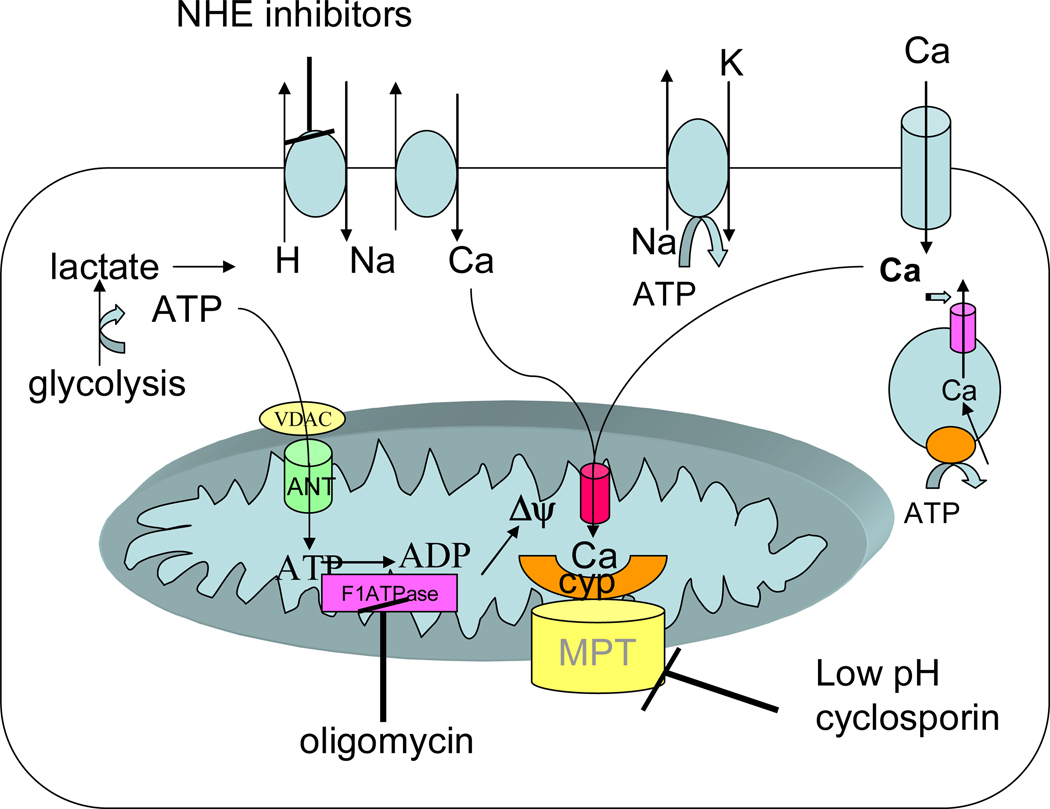Figure 1.
Changes in ions and metabolites during ischemia. During ischemia ATP declines resulting in a decrease in pH due to anaerobic glycolysis. The increase in proton stimulates Na-H exchange and Na-Ca exchange resulting in an increase in cytosolic Ca. Much of the ATP generated by glycolysis is consumed by the reverse mode of the mitochondrial F1F0ATPase which uses the energy to generate Δψ. The Δψ can then be used to take up Ca into the mitochondria. This increase in mitochondrial Ca can activate the MPT, but the low pH due ischemia inhibits MPT so that it is not activated until reperfusion when the pH is restored to normal.

